Israel has traditionally ignored renewable energy as a source of power, despite being in a geographical location that makes it ideal for solar energy.
Well now things are changing, as the country will soon be home to the world’s tallest solar tower.
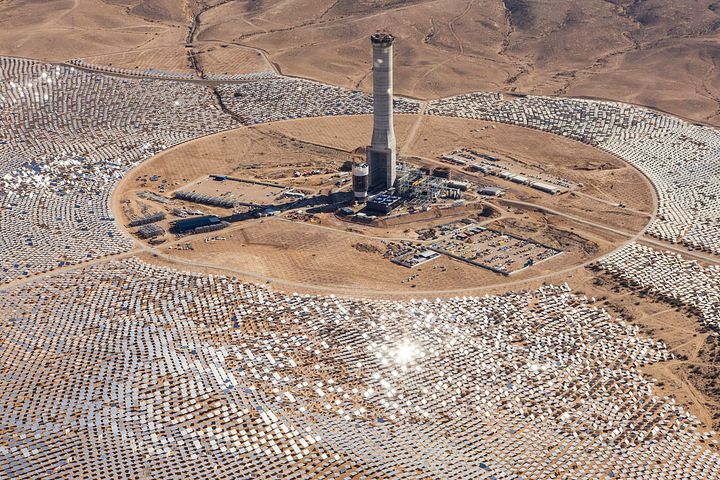
At 250 metres tall, the Ashalim solar thermal power plant will create enough electricity to power 130,000 homes or 1.6 per cent of Israel’s entire energy needs.
The vast project uses 50,000 computer-controlled heliostats surrounding the tower to direct the sun’s rays to a central tower in the middle.
This then heats water stored in a boiler at the top of the tower turning it to steam which in turn fuels a turbine creating the electricity.
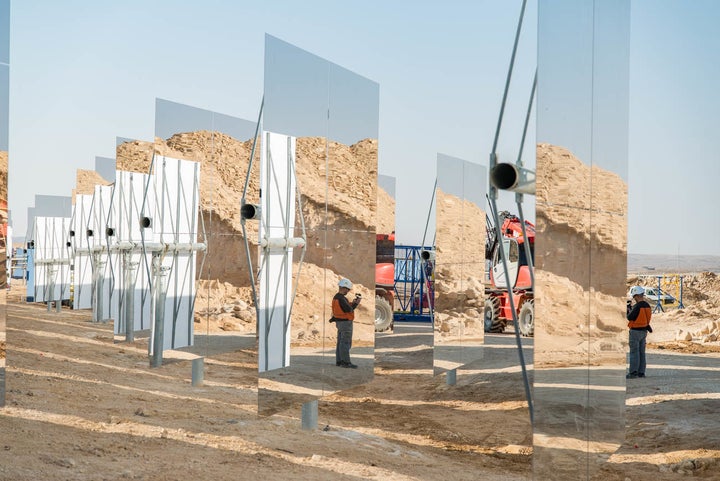
This is all part of Israel’s big plan to get renewable energy providing 10 per cent of its electricity needs by 2020.
The solar tower is actually just one part of a four massive plots which will make up the Ashalim project.
Other plots will contain an energy storage plant which will allow the field to store excess energy overnight.
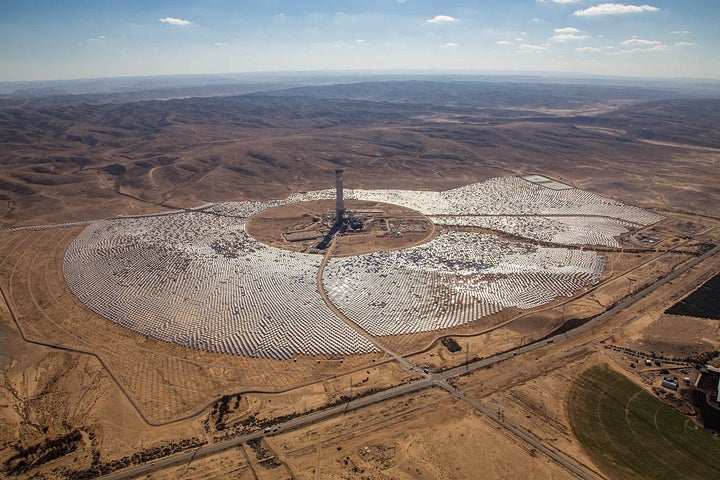
A more traditional photovoltaic plot will then directly convert the sun’s light into electricity.
By using all three methods makers Bright Source Energy believe Ashalim can provide as much energy as the vast solar thermal plants in California.
While shorter, the California fields are much much larger. Ivanpah Dry Lake in California uses 347,000 computer-controlled mirrors to focus sunlight onto boilers on top of three 459-foot towers.
Incredible Green Innovations That Are Changing Our World:
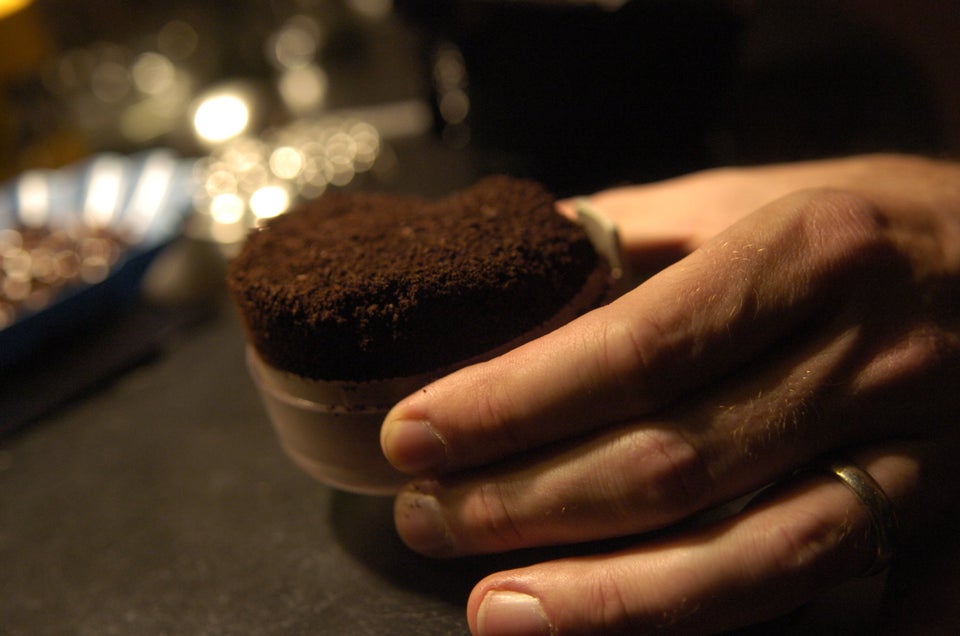
Take London-based company, bio bean, which aims to convert the 200,000 tonnes of waste coffee grounds annually produced in London into sustainable, zero-waste, carbon-neutral fuels to reduce greenhouse gas emissions.
The company has built the first coffee recycling factory in the UK - which can process 50,000 tonnes of waste a year - to transform the grounds into bio-mass pellets, which are perfect for heating up the UK's buildings. Powering transportation is also on the agenda: the company remains carbon-neutral by using its biofuel to power its fleet of trucks.
"Coffee is an incredible plant, full of energy. The result is that bio-bean's Coffee Logs burn longer and hotter than wood, getting people everywhere #poweredbycoffee," says CEO Arthur Kay. Did we mention it costs half of what wood or charcoal does?
"bio-bean works with waste management companies to collect coffee waste at an industrial scale and recycle it into biodiesel, biomass pellets and our newest products, Coffee Logs. Coffee Logs are a local, sustainable alternative to woody biomass and fossil fuels," says Kay. Smells like a winner - and the accolades the brand has racked up confirm it.
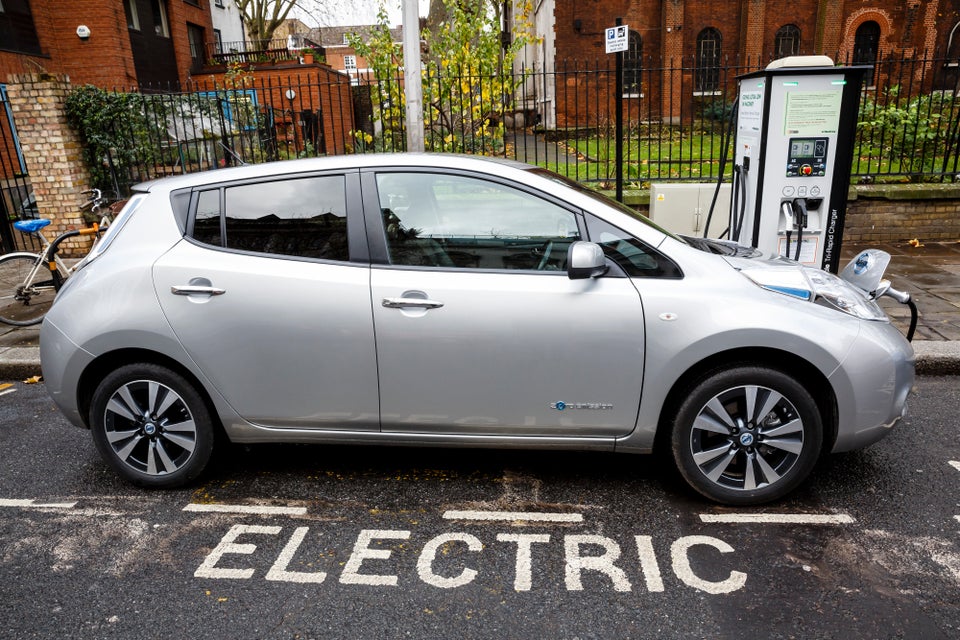
EVs are a smart choice for good reason: they help to cut toxic air pollution, they can save you cash (the UK government offers a plug-in car grant of 35% off the cost of a car, there is no vehicle tax charge on EVs and they are also eligible for a 100% discount on London’s Congestion Charge). Some London boroughs also offer free or reduced-fare parking for EVs.
Other benefits? They can be charged at home (the government offers grants up to 75% towards the cost and installation of a home charge point) or at a public charging bay, making petrol and diesel a thing of the past.
Want to change your energy consumption habits without skimping on looks or convenience? Then you’ll want to know about the Nissan LEAF, an 100% electric hatchback that’s a leader in the zero-emissions vehicle market.
With a range of up to 155 miles from a single charge (thanks to a larger capacity battery pack at 30 kWh), you can charge the LEAF at home or on the go.
Your wallet will thank you, too: no more petrol costs or oil changes, and fewer fuel costs overall (as well as all of those government grants EV owners are eligible for).
Whatever your needs: daily school run, occasional weekend getaway or a car that helps you run errands when you need to, electric cars like the Nissan LEAF can simplify your life. Oh, and in case you're worried you won't like driving one, don't be: a floor-mounted battery pack lowers your centre of gravity for a smooth ride.
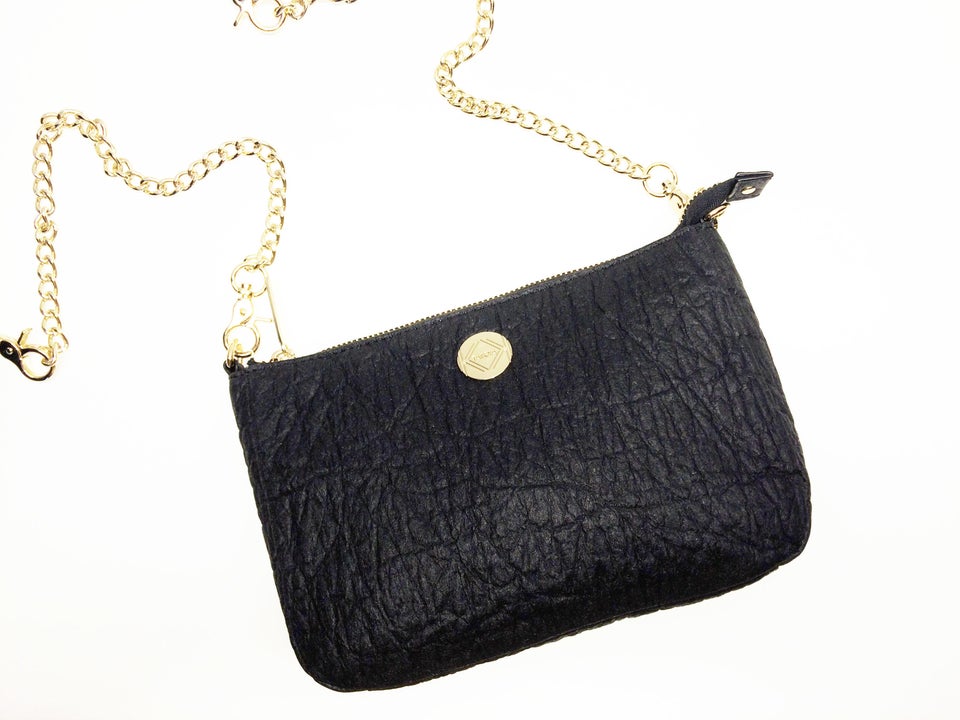
Thankfully, green innovators are doing their part for fashion, with 3D printed clothes and new sustainable textiles courtesy of companies like Bolt Threads, who create engineered spider silk textiles and will be collaborating with eco-aware brand Patagonia.
Another name to have on your radar? Ananas Anam, the company behind revolutionary leather-substitute, Piñatex.
Made from pineapple leaf fibres, Piñatex is a non-woven textile that, after a finishing treatment, becomes aesthetically similar to skin, and that possesses some characteristics of leather, a spokesperson for the brand tells Huffington Post UK.
"Its textural expression carries unique features such as softness, pliability and strength. Piñatex is strong, versatile, breathable, soft, light, flexible, and can be stitched and cut. It flexes very well and is also fire-retardant.
"Piñatex offers a good leather alternative to the fashion and upholstery industry. Our society is currently facing environmental issues and industries have to make a change. We feel part of this emerging sustainable solution. Our innovation shapes the future of the textile industry."
And as far as fashion designers are concerned, it ticks that most important box: it looks great, too.
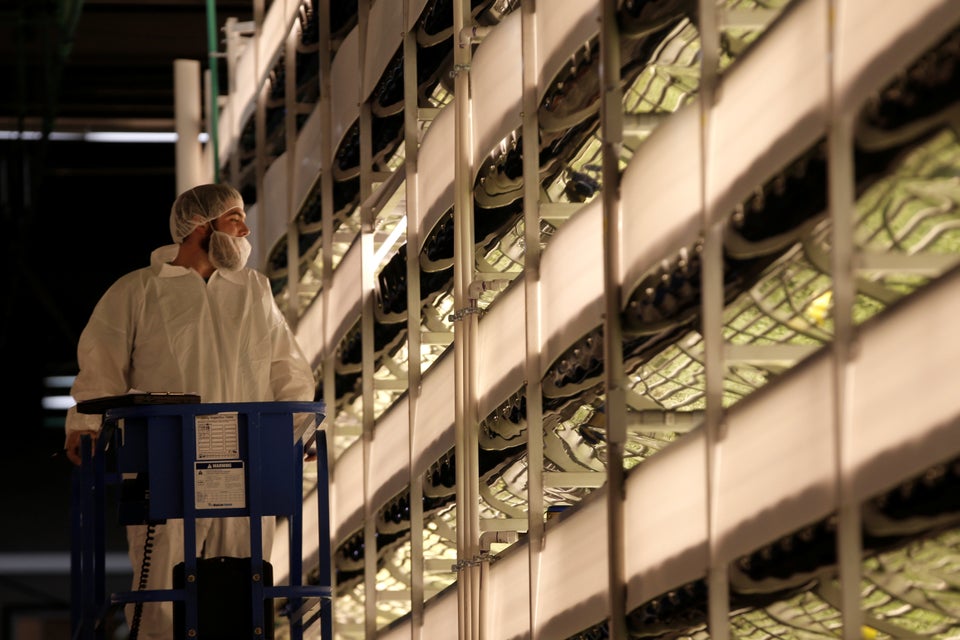
Vertical farms, indoor farms, urban farms, subterranean farms, call them what you like: the idea behind them is the same. Agriculture is no longer limited to fertile soil, a very good thing considering we need to provide food for our expanding population while creating less waste and a minimal carbon footprint.
You can find vertical farms from Singapore to London to New Jersey, but they all have a few things in common: they tend to be multiple stories high, use a hydroponic system and are lit with LED lights that imitate sunlight.
Unlike traditional farm plots, urban gardens produce food year-round in their controlled environment and don't face issues that plague typical farm crops like drought, disease or natural disaster. Another bonus? Retailers and consumers can get their fresh produce super-locally, another benefit for our environment.
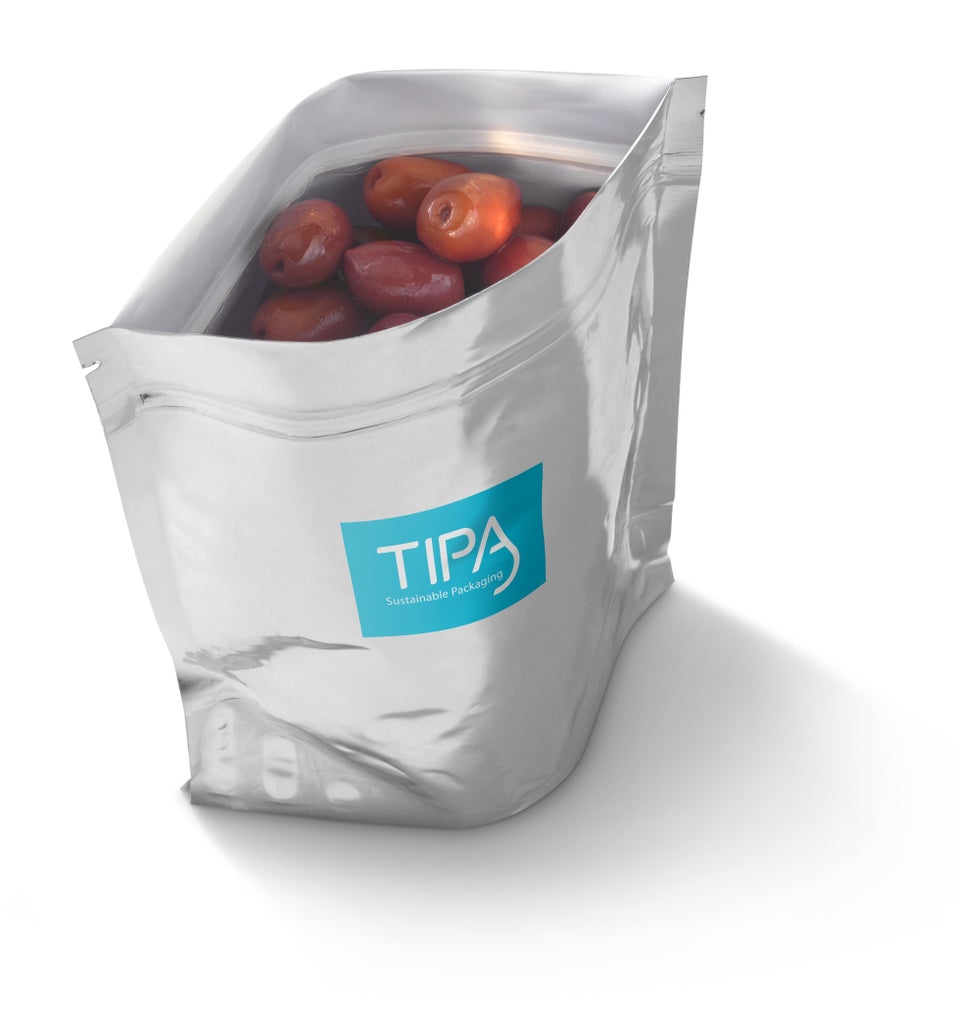
We're all trying to do our part, on a small scale, at least: the government brought in a 5p charge on carrier bags on 5 October, 2015, in an effort to reduce plastic waste, which had positive results. England’s plastic bag usage has dropped over 85% in the first six months since the charge was introduced.
Plastic for food and beverage packaging is responsible for two-thirds of the world’s plastic waste. That's a lot. But there's someone new in town: looks like plastic, feels like plastic, works like plastic - but is fully compostable.
Israeli brand TIPA is innovating in the field of packaging design, creating biodegradable, flexible plastic products that can be thrown away like an orange or banana peel.
Launched in the UK over the summer, TIPA is the brainchild of software engineer Daphna Nissenbaum and industrial designer Tal Neuman, and makes products including clear films for fresh produce, coffee and baked goods, stand-up pouches for crisps and grains and non-transparent, seal-able plastic bags.
"Imagine if you could treat flexible food packaging like an orange peel, like organic waste, a natural resource?" says TIPA CEO, Daphna Nissenbaum.
"TIPA products have the same mechanical properties as most ordinary plastics, serving consumers and manufacturers.
"Consumers enjoy the same level of packaging functionality. Manufacturers get bio-plastics that meet all their manufacturing requirements and that are adaptable to their current packaging and production practices, and we all benefit from a cleaner environment." Watch. This. Space.

